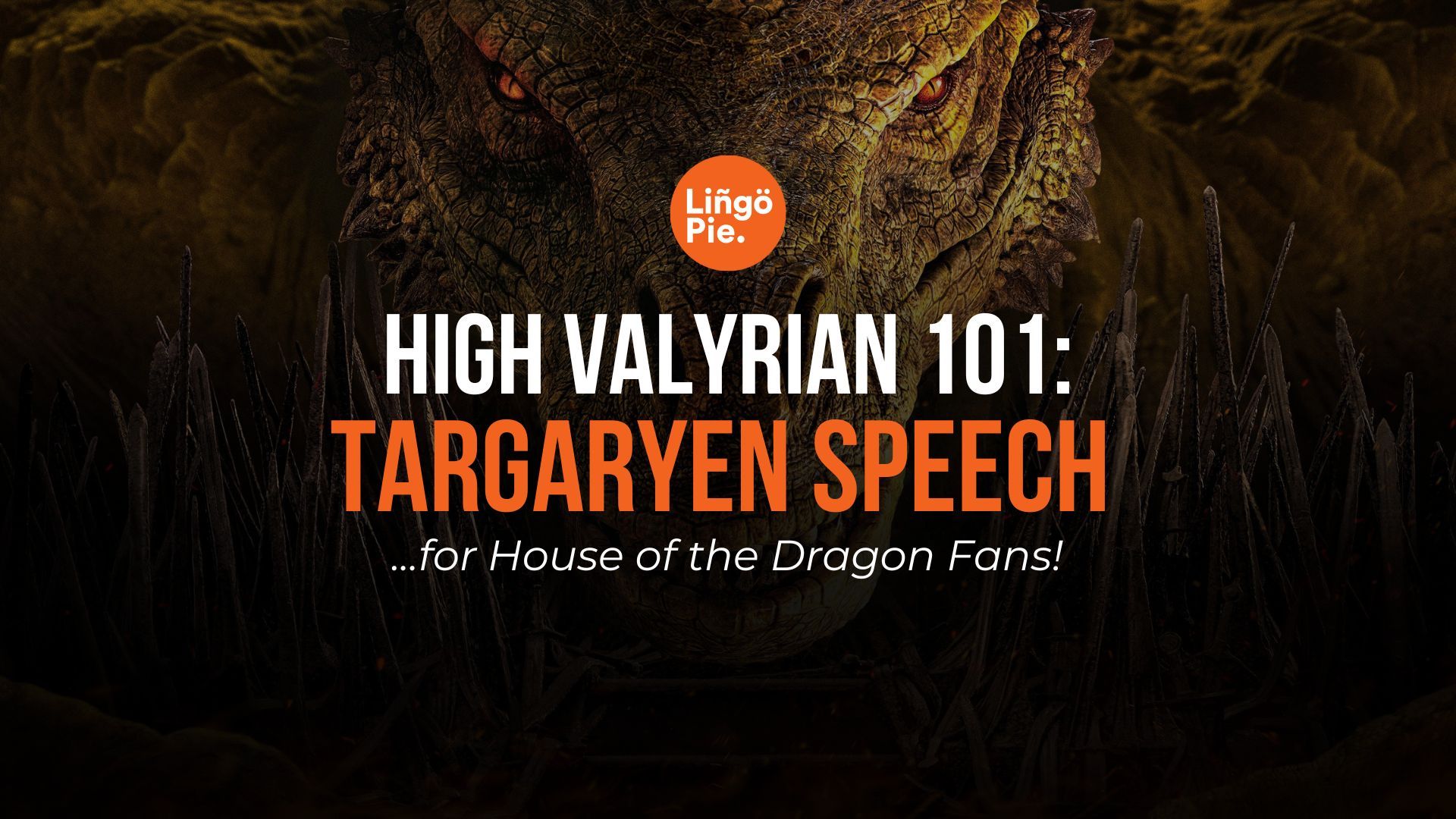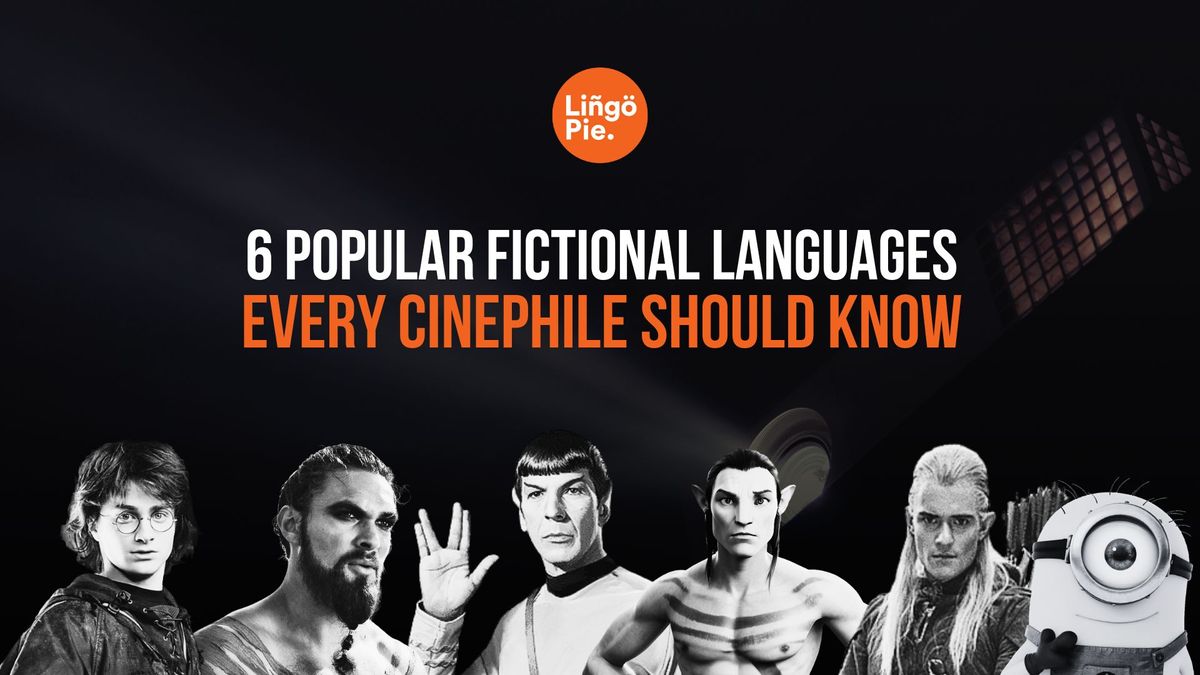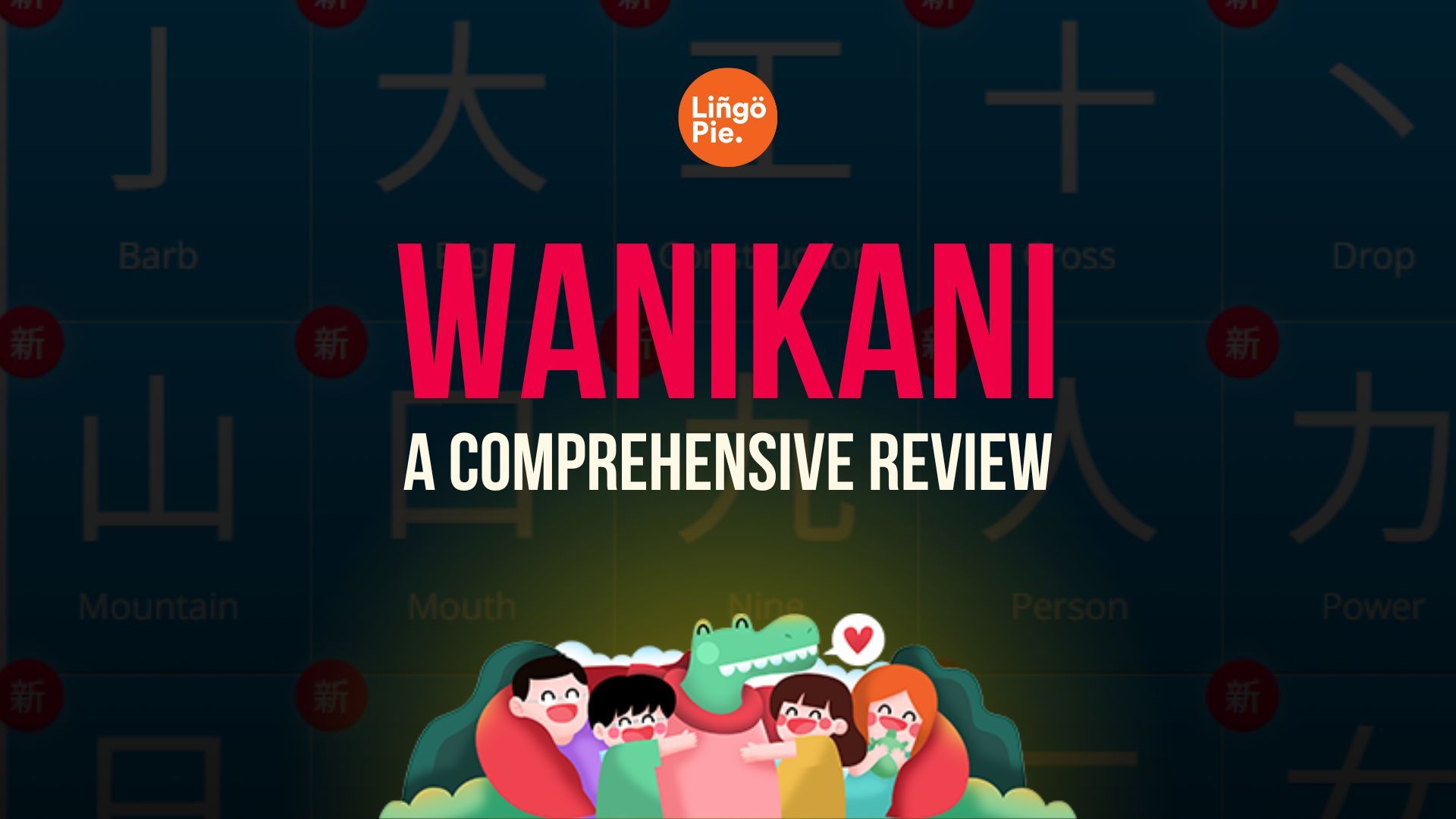Ever watched a sci-fi or fantasy movie and heard characters speaking in a totally made-up language? That's not just gibberish! They're actual languages made by actual conlangers!
These languages have their own rules and sounds that make the movie worlds feel super real. They're a big reason why certain scenes and fictional characters stick in our minds long after the credits roll.
Ready to dive into how these cool fake languages make movies so unforgettable? Let's check out some of the coolest made-up languages in film and see how they work their magic!

Popular Fictional Languages
1. Klingon (Star Trek Universe)
Klingon is a constructed language created for the Star Trek universe. Developed by linguist Marc Okrand in the 1980s, it was designed to reflect the warrior culture of the Klingon people. The language is known for its harsh, guttural sounds and complex grammar, making it distinct and memorable.

Importance in Star Trek Franchise:
Klingon has become an iconic part of Star Trek, appearing in numerous films and TV series since its introduction. It adds depth and authenticity to the Klingon characters, emphasizing their unique culture and values. Fans of the series often learn Klingon as a way to engage more deeply with the Star Trek universe, and it has even been used in real-life settings, such as weddings and conferences.
Examples of Klingon Phrases:
- Qapla' (Success!)
- nuqneH (What do you want?)
- Heghlu'meH QaQ jajvam (Today is a good day to die)
2. Dothraki (Game of Thrones)
Dothraki was developed by linguist David J. Peterson for the HBO series Game of Thrones. Peterson crafted the language based on the limited Dothraki words and phrases found in George R.R. Martin's "A Song of Ice and Fire" books. He created a fully functional language with comprehensive grammar and vocabulary, bringing the Dothraki culture to life through their unique speech.

Usage and Significance in Game of Thrones Series:
The Dothraki language plays a crucial role in Game of Thrones, especially in the storyline involving Daenerys Targaryen and the Dothraki people. It helps to establish the Dothraki as a distinct and formidable culture, with their own traditions and way of life. The language adds depth to the characters and the world they inhabit, making their interactions more authentic and immersive.
Examples of Dothraki Phrases:
- M'athchomaroon
- Hajas! (Be strong!)
- Vezhof (A stallion)
- Anha zhilak yera norethaan (I love you from my heart)

3. Na'vi (Avatar)
Na'vi language is the one spoken by the indigenous people of Pandora in James Cameron's film Avatar. It is known for its melodious and flowing sounds, with a grammar and syntax that reflect the natural harmony of the Na'vi people and their connection to their environment.

Cultural Importance in Avatar Movie:
Na'vi is integral to the cultural identity of the Na'vi people in Avatar. It underscores their deep connection to nature and their communal way of life. The language plays a significant role in the film, helping to build the world of Pandora and making interactions between characters more authentic. The use of Na'vi by human characters also symbolizes their acceptance and respect for the Na'vi culture.
Examples of Na'Vi Phrases:
- Kaltxì (Hello)
- Oel ngati kameie (I see you)
- Eywa ngahu (Eywa be with you)
- Tsun oe nga-hu nì-Na'vi pivängkxo a fì-'u oeru prrte' lu. (It is a pleasure to speak with you in Na'vi)
4. Elvish (The Lord of the Rings)
Elvish in J.R.R. Tolkien's Middle-earth consists primarily of two languages: Quenya and Sindarin. Quenya, often referred to as High Elvish, is an ancient and formal language used mainly in writing and ceremonial contexts. Sindarin, on the other hand, is the everyday spoken language of the Elves in Middle-earth during the time of The Lord of the Rings.

Role in The Lord of the Rings and The Hobbit Films:
Elvish languages play a significant role in The Lord of the Rings and The Hobbit films, enhancing the mystique and grandeur of the Elves. Characters like Legolas, Arwen, and Galadriel often speak in Elvish, underscoring their ancient heritage and connection to Middle-earth's history. The use of Elvish in the films adds an extra layer of immersion and authenticity, drawing viewers deeper into Tolkien's world.
Examples of Elvish Phrases:
- A Elbereth Gilthoniel (O Elbereth Starkindler)
- Á na márië (Be well)
- Namarie (Farewell)
- Le nathlam hí (You are welcome here)
5. Minionese (Despicable Me)
Minionese language is the whimsical and playful language spoken by the Minions in the Despicable Me franchise. It's designed to be humorous and entertaining, reflecting the Minions' mischievous and joyful personalities. The language is a mix of gibberish and real words from various languages, adding to its charm and comedic effect.

Popularity Among Fans and Cultural References:
Minionese has become hugely popular among fans of all ages. The quirky language has spawned numerous memes, merchandise, and cultural references. Fans enjoy mimicking the Minions' speech, and phrases like "Banana!" and "Bello!" have become widely recognized. The playful nature of Minionese has made it a beloved part of the Despicable Me franchise, contributing to the enduring popularity of the Minions.
Examples of Minionese Phrases:
- Bello! (Hello!)
- Banana! (Banana)
- Tulaliloo ti amo! (We love you!)
- Poopaye! (Goodbye!)
6. Parseltongue (Harry Potter)
Parseltongue is a rare and magical language in the Harry Potter universe, characterized by its hissing sounds, akin to the language of snakes. Only Parselmouths, individuals with the innate ability to communicate with serpents, can understand and speak it. This mysterious and eerie language reflects the serpentine nature of the creatures it communicates with.

Significance in the Harry Potter Series:
Parseltongue holds significant importance in the Harry Potter series, especially in "Harry Potter and the Chamber of Secrets." Harry discovers his ability to speak Parseltongue when he inadvertently speaks to a snake during a visit to the zoo and later uses this ability to open the Chamber of Secrets.
Parseltongue is also associated with dark wizards like Salazar Slytherin and Voldemort, adding an element of fear and mistrust around those who can speak it. Harry's ability to speak Parseltongue becomes a crucial plot point, highlighting his unique connection to Voldemort and the complex legacy of Slytherin House.
Examples of Parseltongue Phrases:
- Sya-hasse-teth! (Open!)
- Hesha-hassah! (Close!)
- Nagini! (Come!)
Final Words
Fictional languages like Klingon, Dothraki, Na'vi, Elvish, Minionese, and Parseltongue add a rich layer of immersion and authenticity to the worlds they inhabit. Each language, meticulously crafted and unique in its own way, enhances the cultural depth of its respective universe, making characters and their stories more compelling.
These languages not only contribute to the storytelling but also engage fans on a deeper level, inspiring them to learn and use these languages in their own lives. By exploring these fascinating linguistic creations, we gain a greater appreciation for the creativity and detail that go into building the captivating worlds we love to watch on screen.
Learn New Languages By Watching Movies With Lingopie!
Who says learning can’t be fun? Grab some popcorn and immerse yourself in foreign films or binge-watch TV shows. That's the mission of Lingopie, making language learning fun and immersive!
Lingopie makes learning a new language fun and effective by using real TV shows, movies, and documentaries. It offers interactive subtitles, so you can click on any word to get an instant translation and pronunciation. If this sounds fun to you, download Lingopie from the App Store or Play Store now and get a FREE 7-day trial!
Frequently Asked Questions
1. What is the most well-known fictional language?
The most well-known fictional language is likely Klingon from the Star Trek universe. It's known for its unique sounds and grammar, developed to reflect the warrior culture of the Klingon species.
2. What is the easiest fictional language to learn?
Dothraki from Game of Thrones is often considered one of the easier fictional languages to learn. Created by linguist David J. Peterson, it has straightforward grammar and pronunciation rules compared to other fictional languages.
3. How many fictional languages exist?
There is no definitive number, as new fictional languages are created regularly for movies, books, and games. Hundreds of fictional languages have been developed over time, each designed to fit specific fictional worlds and cultures.
4. What type of language is used in fiction?
Languages used in fiction are typically constructed languages (conlangs). These languages are specifically created for fictional worlds to enhance storytelling, create cultural depth, and sometimes serve practical plot purposes.










